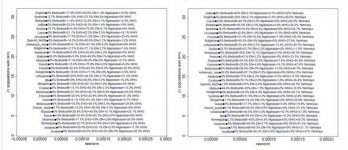Sile
Banned
- Messages
- 5,110
- Reaction score
- 582
- Points
- 0
- Location
- Australia
- Ethnic group
- North Alpine Italian
- Y-DNA haplogroup
- T1a2 -Z19945..Jura
- mtDNA haplogroup
- H95a1 ..Pannoni
@Sevennini
Interesting opinion but linguistics and archeology do not support the Anatolian origin.
Now we have also genetics and the haplotype R1b U152, the only one which correlates with Etruscans, originated North of the Alps.
Tacitus states that Raetian lands start at the danube river and go south into the Alps.
The Raetian language based on some hungarian linguistics is said to originate from west-semitic ( modern Syria )
https://books.google.com.au/books?i...w#v=onepage&q=tacitus and the raetian&f=false
there are no Raetian towns between the alps and the danube river as they are only Roman built towns, Trent seems the only town.
The Reeti were divided, according to Pliny, into many states or tribes. Of these the most important were, 1. The Lepontii, in the southwestern part of the province. 2. The Tridenlini, in the southeastern. 3. The Genauni, whom Horace mentions, east of the Lepontii. 4. The Vennoncs, near the sources of the Athesis, now Adige. 5. The Brixentes, north of the Tridentini. 6. The Brenni or Brcuni, north of the Raitian Alps, also mentioned by Horace.
The great chain of the Alps passes almost through the center of this province, and bears various names in different parts of it. On the western borders are the Alpcs Pennina, in the northwest are the Alpes Leponiia, and on the north are the Alpcs Summa, succeeded by the Alpes Ralica. These mountains were all inhabited by various tribes of the Raeti.
Several large rivers rise in these mountains, of which the most important were, 1. The Rhenus or Rhine, rising in the Lepontine Alps. 2. The Rhodanus or Rhone, rising in the same vicinity. 3. The Ticinus or Tesino, a tributary of the Po, rising in the same division of the Alps. 4. The Addua or Adda, another Italian river, rising in the Raetian Alps. 5. The Athesis or Adige, rising in the same Alps, and flowing into the Adriatic; and, 6. The (Enus or Inn, a tributary of the Danube.
The valleys between these mountains were very fertile, and were particularly celebrated for their grapes, from which excellent wine was made. The Raetian wine was the favorite wine of Augustus.
The only place of importance in Raetia was Tridentum, now Trent.
there is little similarly between etruscan and raetian script
http://titus.fkidg1.uni-frankfurt.de/didact/idg/germ/runealph.htm



